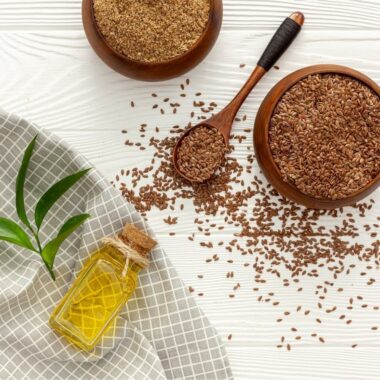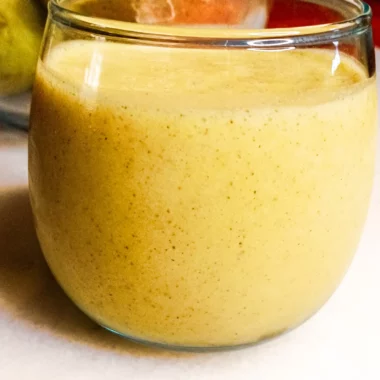Believe it or not, this mango pudding was supposed to be a remake of one of the first recipes I posted to Food And Mood Creations: mango bread. Everyone said the mango bread was delicious, and I agree that it tasted delicious. However, the recipe did not sit well with me because there was little to no mango flavor.
I made the mistake of combining nutty almond flour with buckwheat flour. In short, I was not happy with the results, so I patiently waited for mango season to come back again so I could make a second attempt at mango bread.
Have Expectations But Be Aware Things Can Go Wrong
One of the greatest lessons about gluten-free baking is to know that recipes can turn out horribly. Early on, I expected every recipe to come out right every time.
More than a year later, I’ve realized that it’s okay if a recipe does not work out. Even if a recipe doesn’t work out the way you planned, it sometimes comes out better. This mango pudding is the perfect example of a seemingly failed recipe turning into an irresistibly delicious recipe.
After cutting into the mango bread, I realized immediately that the texture inside the bread was off. It was not underdone because I baked the bread for more than an hour, but it had a pudding-like texture.
Initially, I was upset. However, my attitude changed when I tasted it, and that’s how Bahamian mango pudding was born. Maybe next year’s mango bread recipe will turn out right.
Health Benefits Of Mangoes
Not only do mangoes taste delicious, but they are filled with health benefits. Mangoes contain multiple phytochemical compounds, including phenolics and flavonoids.
These compounds allow mangoes to have antioxidant properties. Antioxidants can decrease the risk of chronic degenerative diseases, help individuals manage chronic diseases like cancer, and boost immunity.
Phenolic compounds may have anti-aging and anti-inflammatory effects as well as anti-diabetic and anti-proliferative properties. Phenolic compounds may also have a cardioprotective effect.
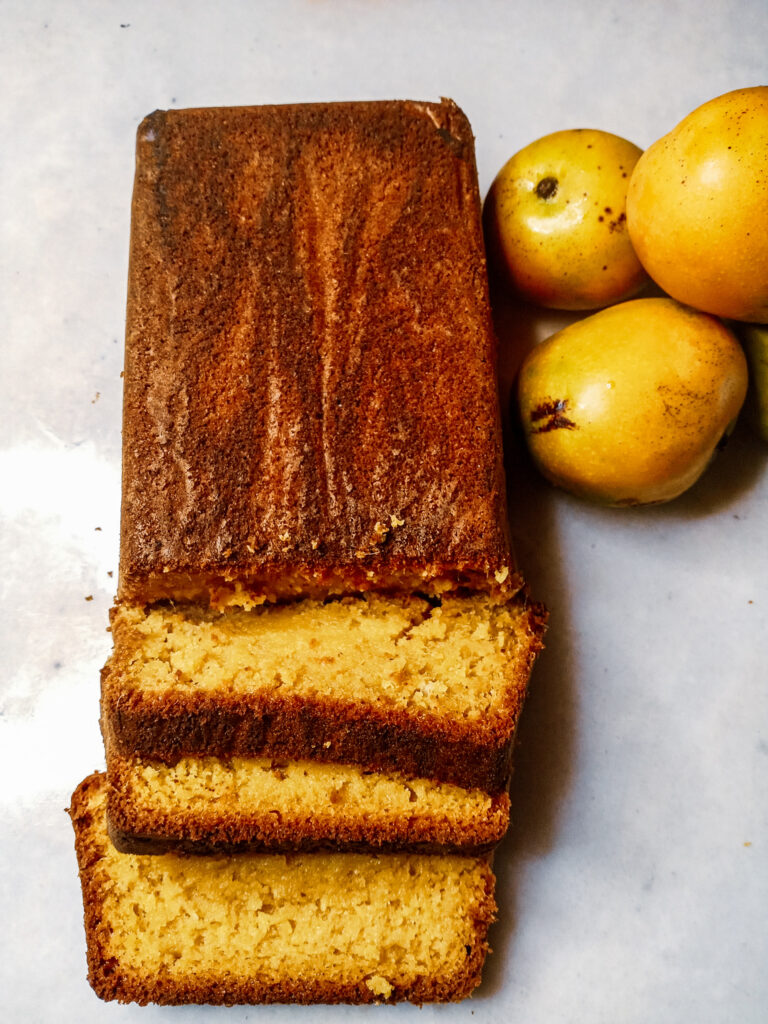
Tips For Making Mango Pudding
I used fresh mango puree. To make the mango puree, I peeled and cut 2-3 mangoes, then placed them into a blender and blended them into a puree.
There are over 100 varieties of mangoes around the world. Therefore, the type of mango you use to make mango pudding will most likely be different than the type of mangoes I used to make the pudding unless you are in the Bahamas or the Caribbean region.
I used hairy or stringy mangoes. They are called hairy because these mangoes have thin hair-like fibers.
Most people despise hairy mangoes because the fibers get stuck in your teeth. However, these were the only mangoes I had on hand, so I used them.
Blending the mangoes for 1-2 minutes helps them break down into a smooth puree. Additionally, I always pour the mango puree into a fine-mesh sieve set over a bowl. The fine-mesh sieve will catch the stringy fibers and prevent them from ending up in the pudding.
As I mentioned, the mango pudding takes a little over an hour to bake. Therefore, if the mango pudding starts browning too much, reduce the oven’s temperature to 325°F and loosely cover it with foil.
How To Store Mango Pudding
To store mango pudding, wrap the leftovers with plastic wrap tightly. You can store the mango bread at room temperature for 1-2 days or in the fridge for 2-3 days.
I do not recommend freezing this mango pudding because I have no idea how it will turn out. This mango bread only lasted two days, so I was not able to test out how it would stand up to the freezing process. So, freeze the mango pudding at your own risk.
Recommended:
Lemon Poppy Seed Bread
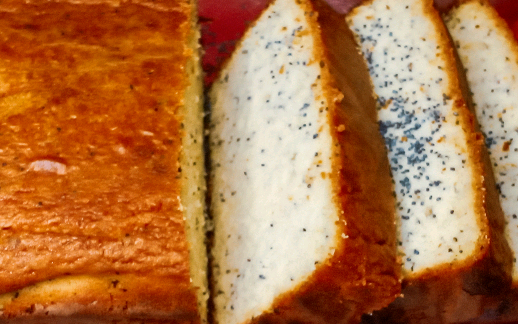
Gluten-Free Mango Muffins
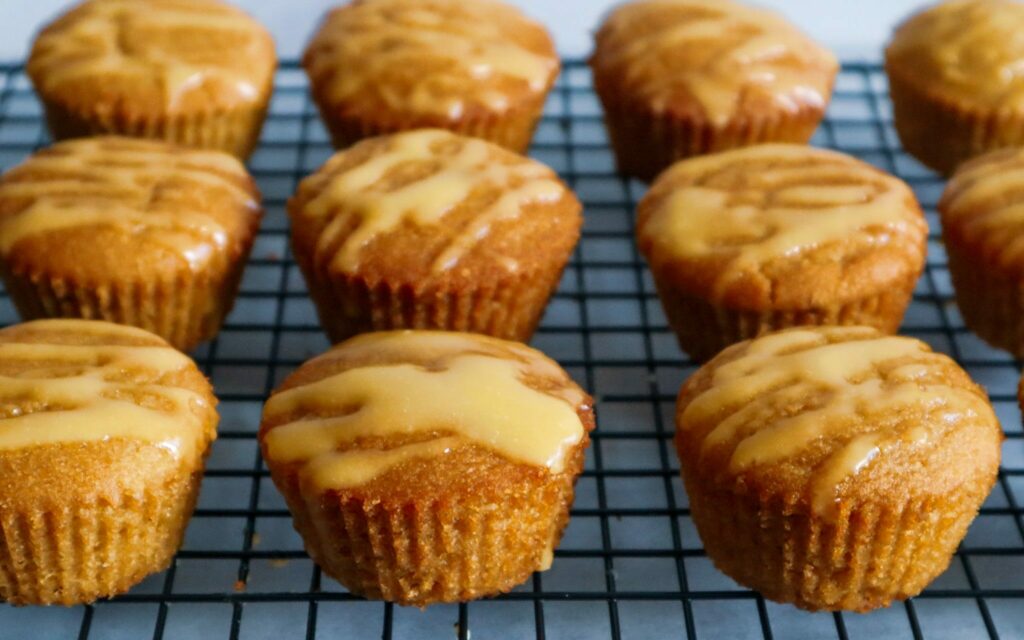
Paleo Mango Ice Cream
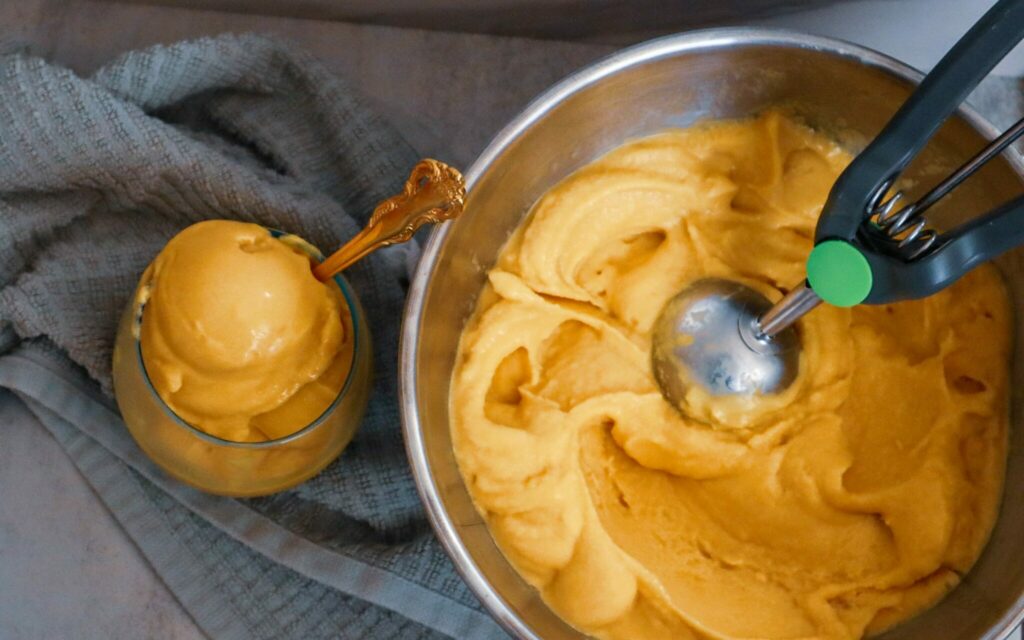

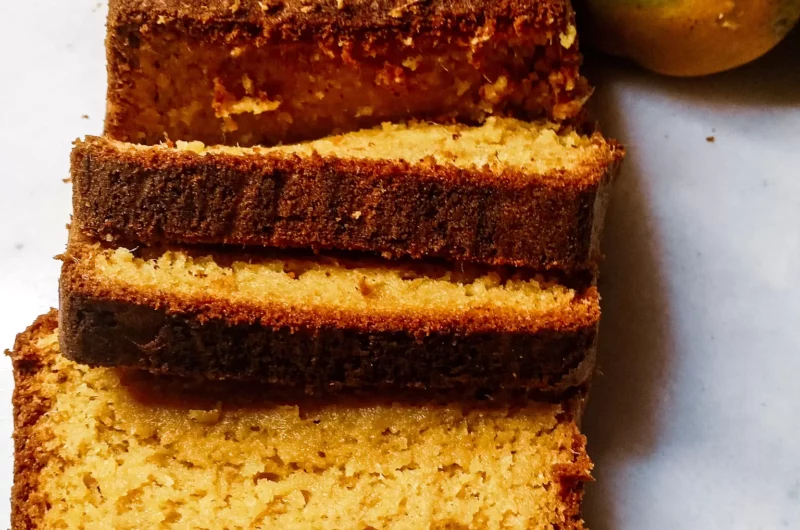
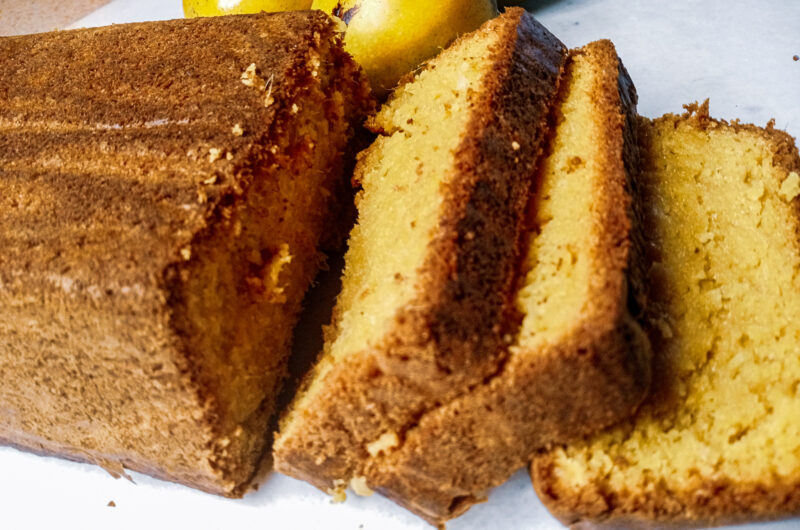
 Please do not copy this recipe without my permission.
Please do not copy this recipe without my permission.